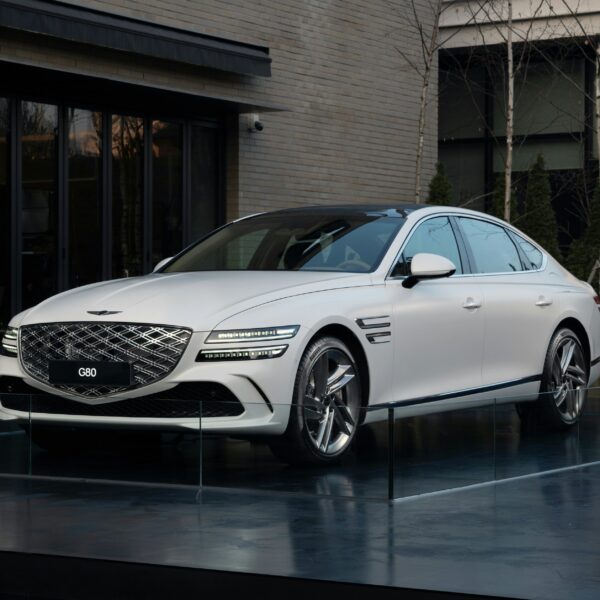Buyers Guide to Purchasing an Electric Vehicle
The newly-imposed clean vehicle tax credit has a number of drivers contemplating the following question: Is it time to buy an EV? While the federal law comes with a set of restrictions, there are a laundry list of makes and models that currently fit the bill. Some of our favorites include the 2022-2023 Tesla Model 3, 2022-2023 Volvo S60, and 2022-2023 Rivian R1T. Of course, the sweet deal isn’t lasting much longer. The government announced last week that effective April 18th, the updated battery sourcing requirements will take effect. Meaning, the amount of automakers and vehicle options available on the IRS list will reduce drastically. If you’re thinking of purchasing an electric vehicle, now’s your final chance to make the most of the $7,500 write-off.
Things to consider before purchasing an electric vehicle
Whether or not your decision to switch to a clean vehicle was made on account of the federal tax credit, it’s a positive choice to make nonetheless. As the market transitions to less gas-powered engines, more and more buyers will need to invest in cleaner alternatives. This incentive is a humble beginning yet so far is proving to motivate enough buyers into purchasing an electric vehicle. Many companies, namely Tesla, have had record-breaking EV deliveries in Q1.
That said, it’s critical to note there are certain adjustments you’ll need to make. First and foremost, you’ll need to consider how often you’ll travel, more specifically the range you’ll need. You’ll also have to make a few updates to your home if you plan on installing an EV charger for convenience. All and all, the type of electric vehicle you choose in this day and age does matter. Not all EVs come equipped with the right amount of range or amenities to meet drivers’ expectations, let alone lifestyle.
In this guide, we’ll sort out all the important details you’ll need to consider, including expense and quality of the vehicle, for when the time comes to invest in an electric model.
 So you’re ready to buy an EV…
So you’re ready to buy an EV…
Before you can commit to an electric vehicle purchase, it’s important to understand that your relationship with your car may change. With gas models, you never really have to worry about having enough fuel to get to one place to the next. In any city, it’s easy to find a gas station within a few blocks of where you are. With electric models, that ease of convenience is put to test. Though the number of public EV charging stations are growing by the minute, it’s no where near the magnitude of Shells and Mobil stations nationwide.
This thought brings us to one of the most critical aspects of purchasing an electric vehicle — How much range do you need?
1. Range
The amount of range you need is highly subjective. You could be in a situation that involves working from home so you don’t have as much use for your car each day. In that case, a 200 mile range may be adequate. On the contrary, if you commute or travel often, you’ll want to choose a model that has over 200-300 miles of range. Options like the Ford Mach-e and Tesla Model Y are a better choice. Ultimately, the decision comes down to your driving habits.
2. Charging preference
Even with recent advancements, electric charges are not the greatest in terms of longevity. And if you want the added mileage, you’ll certainly pay the price. The bottom line being there are limitations regardless if you have a Level 2 or DC fast charger in your driveway. The questions you should be asking before purchasing an electric vehicle include:
- How much time does it take the EV to charge?
- What are the requirements for maintaining battery health?
- What’s the car’s overall efficiency rate?
- How much does it cost to install an at-home EV charger?
These inquiries will help you determine if a particular make or model satisfies your expectations as a buyer. Also, you’ll get a clearer idea of how much of a financial investment you’ll have to make. Can your home’s electrical output handle your new addition? Or will it cost you hundreds or thousands to make this happen.
3. The experience of driving an EV
Compared to conventional models, electric motors have the unique ability to reach maximum speeds in just a few seconds. That instant acceleration can take some getting used to if you haven’t been behind the wheel of a clean-powered model before. Since there is no shifting between gears to reach a certain acceleration, EVs are notoriously efficient and fun to drive, all-while being incredibly quiet. A handful of automakers, like the Kia EV6 and Hyundai Ioniq 5, have even made it possible to have all-wheel drive.
Perhaps one of the biggest characteristics of an EV driving experience is the addition of regenerative braking. With this feature, your vehicle recycles energy that would be lost during the deceleration process and allows for a more seamless and efficient braking situation.
4. Pricing
It’s fair to say that every car buying decision starts and ends with pricing. Because electric vehicles fall on the higher-end spectrum of the automotive market, it’s not a decision that can be made lightly. You’ll need to have enough financing to qualify for this type of purchase, regardless of the federal tax incentive. There are very few electric models that don’t retail over $60,000. The amount is still above the national average price for a new car, which reached $48,763 in February 2o23.
As can be seen, there is a lot of working pieces to make your electric vehicle purchase the right decision. We hope this guide helps you weigh the pros and cons more easily, or better yet, get prepared for life as an EV owner. To learn more about electric vehicle ownership, check out our features below:















